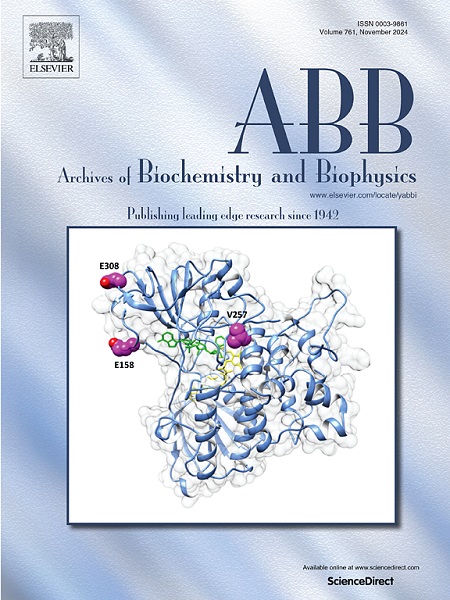Differential effect of cerium nanoparticles on the viability, redox-status and Ca2+-signaling system of cancer cells of various origins
IF 3
3区 生物学
Q2 BIOCHEMISTRY & MOLECULAR BIOLOGY
引用次数: 0
Abstract
The present study aims to understand the molecular mechanism underlying the therapeutic effect of cerium nanoparticles (CeNPs) in oncology. Cancer cells were treated with different concentrations of pure nanocerium of different sizes synthesized by laser ablation. Due to the not insignificant influence of surface defects and oxygen species on the ROS-modulating properties of cerium nanoparticles, the nanoparticles were not coated with surfactants or organic molecules during synthesis, which could potentially inhibit a number of pro-oxidative effects. Reactive oxygen species (ROS) production, expression of genes encoding redox-status proteins, selenoproteins and proteins regulating cell death and endoplasmic reticulum stress (ER-stress) were investigated as indicators of the molecular mechanism of cancer cell death. Studies were conducted on the effects of cerium nanoparticles on the Ca2+ signaling system of cancer cells of different origins. Mouse fibroblasts (L-929 cell line) were used as non-cancerous (“normal”) cells for which a whole series of experiments were performed, and a comparative analysis of the effects of nanoceria. It was found that 75 nm-sized cerium nanoparticles did not affect the redox-status and ROS production of cancer cells. In fibroblast cells, however, this nanoparticle diameter led to a deterioration of the cellular redox status and ROS production in a wide range of nanoparticle concentrations. Larger nanoparticles (100 nm-sized and 160 nm-sized), on the other hand, showed a different effect on cancer cells of different origins. In mouse fibroblast L-929 cells, however, 100 nm-sized or 160 nm-sized CeNPs acted in a high concentration range to disrupt mitochondrial membrane potential and activate early apoptosis. High concentrations of CeNPs were required to increase ROS production, reduce redox-status and induce apoptosis in human A-172 glioblastoma cells compared to the hepatocellular carcinoma cell line HepG2 and the breast cancer cell line MCF-7. In the A-172 glioblastoma cells, ER-stress was also not activated and their Ca2+ signaling system was activated by a significantly higher concentration of CeNPs, which could also contribute to the formation of tolerance of this cancer cell line to nanoceria. The Ca2+ signaling system of mouse fibroblasts was found to be highly sensitive to activation by nanoceria and the cells produced Ca2+ signals with higher amplitude compared to A-172 and MCF-7 cells.

铈纳米颗粒对不同来源癌细胞活力、氧化还原状态和Ca2+信号系统的差异影响。
本研究旨在了解纳米铈(cerium nanoparticles, CeNPs)治疗肿瘤的分子机制。用激光烧蚀法合成不同浓度、不同大小的纯纳米铈治疗肿瘤细胞。由于表面缺陷和氧的种类对铈纳米颗粒的ros调节性能的影响并非不显著,因此在合成过程中,纳米颗粒没有被表面活性剂或有机分子包裹,这可能会抑制一些促氧化作用。研究了活性氧(ROS)的产生、氧化还原状态蛋白编码基因的表达、硒蛋白以及调节细胞死亡和内质网应激(er -应激)的蛋白的表达,作为癌细胞死亡的分子机制指标。研究了铈纳米颗粒对不同来源癌细胞Ca2+信号系统的影响。小鼠成纤维细胞(L-929细胞系)作为非癌细胞(“正常”)进行了一系列实验,并对纳米细胞的作用进行了比较分析。研究发现,75纳米尺寸的铈纳米颗粒不影响癌细胞的氧化还原状态和ROS的产生。然而,在成纤维细胞中,这种纳米颗粒直径会导致细胞氧化还原状态的恶化,并在大范围的纳米颗粒浓度下产生ROS。另一方面,较大的纳米颗粒(100纳米和160纳米)对不同来源的癌细胞表现出不同的效果。然而,在小鼠成纤维细胞L-929细胞中,100 nm或160 nm大小的CeNPs在高浓度范围内可破坏线粒体膜电位并激活早期凋亡。与肝癌细胞系HepG2和乳腺癌细胞系MCF-7相比,在人A-172胶质母细胞瘤细胞中,需要高浓度的CeNPs来增加ROS的产生,降低氧化还原状态并诱导细胞凋亡。在a -172胶质母细胞瘤细胞中,er应激也未被激活,其Ca2+信号系统被显著较高浓度的CeNPs激活,这也可能有助于该癌细胞系对纳米粒的耐受性的形成。研究发现,小鼠成纤维细胞的Ca2+信号系统对纳米粒的激活高度敏感,与A-172和MCF-7细胞相比,细胞产生的Ca2+信号幅度更高。
本文章由计算机程序翻译,如有差异,请以英文原文为准。
求助全文
约1分钟内获得全文
求助全文
来源期刊

Archives of biochemistry and biophysics
生物-生化与分子生物学
CiteScore
7.40
自引率
0.00%
发文量
245
审稿时长
26 days
期刊介绍:
Archives of Biochemistry and Biophysics publishes quality original articles and reviews in the developing areas of biochemistry and biophysics.
Research Areas Include:
• Enzyme and protein structure, function, regulation. Folding, turnover, and post-translational processing
• Biological oxidations, free radical reactions, redox signaling, oxygenases, P450 reactions
• Signal transduction, receptors, membrane transport, intracellular signals. Cellular and integrated metabolism.
 求助内容:
求助内容: 应助结果提醒方式:
应助结果提醒方式:


